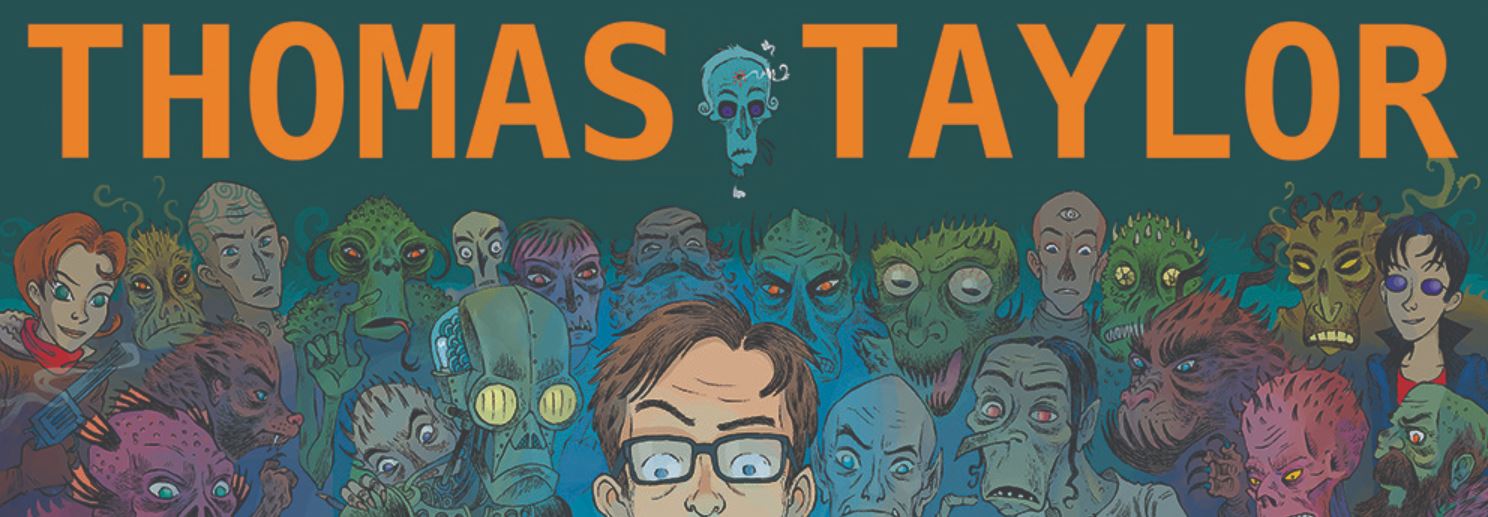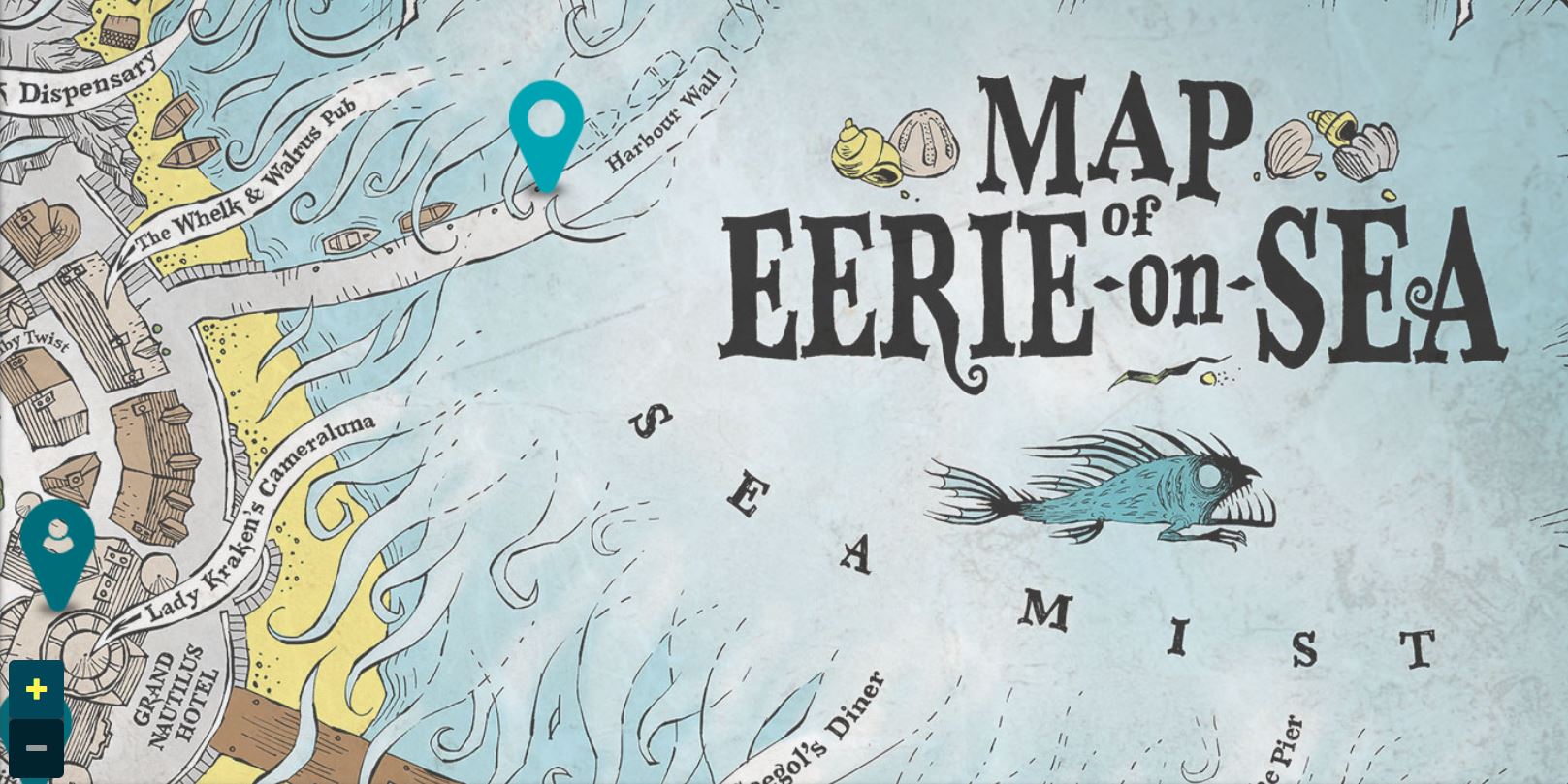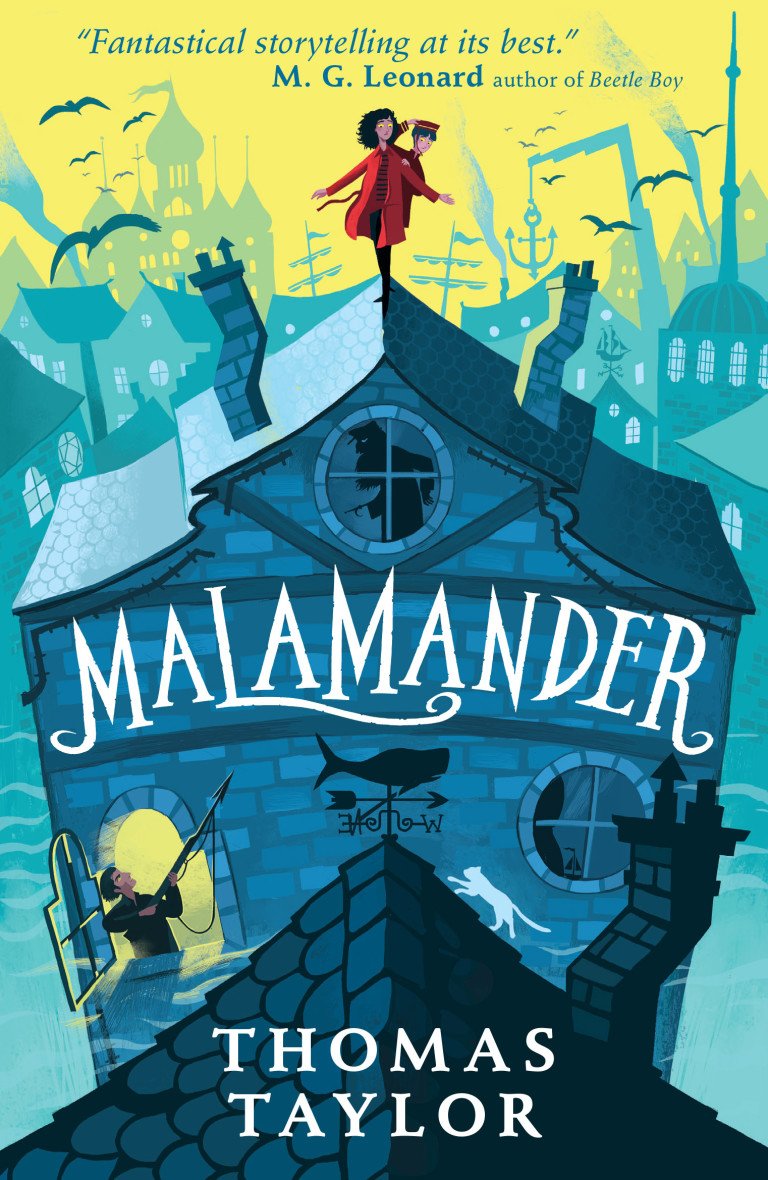Author Thomas Taylor talks to Ian Eagleton about his new book Malamander, Greek myths, mysteries and monsters, and his exciting plans for a sequel…

I wonder if you could start by telling us a but about your new book Malamander?
Malamander is the first in a series of stories about the ‘Legends of Eerie-on-Sea’, in which we meet Herbert Lemon, Lost-and-Founder at the Grand Nautilus Hotel, and his friend Violet Parma, who is lost and wants to be found. It’s a story about friendship and belonging, about out-of-season seaside towns and bewildering weather, about mysteries, mischief and monsters. Oh, and fish ‘n’ chips!
How are the main characters Herbert and Violet similar? How are they different? Which one are you more like?
Herbie and Violet both love mystery and adventure but approach it from a different ends: Herbie likes his adventuring to be done form the safety of his Lost-and-Foundery, with the help of clever ideas and tricks, whilst Violet is physically much braver and takes a ‘let’s just do it!’ approach. Herbie finds Violet alarming, and Violet finds Herbie frustrating. But between them, they make a pretty good team.
I would say Herbie is a bit like me, while Violet is more how I’d like to be.
The word malamander sounds very similar to salamander, which is derived from ancient Greece. Did the ancient Greek myths influence your writing at all? How did you decide on a name for the mysterious creature in the story?
Mythology and folklore are at the heart of the inspiration for these stories, but I don’t want to just use existing legends or well-known fantastical creatures. I could have used a monster out of Greek or Norse myth, but it’s much more fun to invent my own. I was lucky with the name – taking an existing word and changing just one letter to create something new is a powerful technique, but it doesn’t always work. In this case, changing the ‘S’ of ‘salamander’ to an ‘M’ allowed me to hint at ‘Mal’, the French for ‘evil’, whilst evoking an aquatic creature that creeps and slithers on land.
What inspired the setting of Eerie-on-Sea?
I’ve often lived near to the sea, but it was coming to live in a seaside town – and being there all year round – that inspired Eerie-on-Sea. There’s a secret life to old coastal resort towns that you don’t see if you only go there in the summer, and paddle in the sun. When the weather turns bad and the nights draw in, a different type of person can be found on the beach: beachcombers with pockets full of treasure, dog walkers who’ve seen a thing or two, tall dark strangers who stand and look out to sea. Half the shops are shut then, and the town feels empty. But it isn’t…
Real life towns that have inspired Eerie-on-Sea are Tenby, in Wales, with its high position on a rock, and its fortified archways; Cromer, in Norfolk, with its hotel overlooking the pier; Hastings Old Town, with its twisting narrow streets, tumbledown shops and fishing huts; Dieppe in France, with its winter darkness and brooding castle. All these places have been name-checked as street names on the map I drew for Malamander.
I was interested to see that Eerie-on-Sea now has its own website which readers can explore. Why did you decide to create this? How do you feel technology has changed the way you can interact with your audience and promote your book?
Walker made the website for the book. I think the value is in giving readers, of all ages, a place to land on the internet and find basic information, and hopefully be inspired to read the book. The interactive map is a particularly nice touch. The book trailer, embedded in the website, also allows Malamander to have some sort of presence on YouTube, which is important.
These days, being reachable on-line is seen as normal for anyone in a creative field, and readers do seem to like to be able to make contact with authors via social media. However, for children’s book writers there’s still a barrier between us and our core readers, children, as most 9 to 12 year olds aren’t on Facebook or Twitter. And this is as it should be. The best way for a young reader to contact an author is still to write a letter, and post it to the author’s agent or publisher. This always makes authors happy!

I love the fact that in the Eerie Book Dispensary, books are chosen for the reader, depending on what you need. What books do you think might be chosen for you at this moment in time?
At the moment I want to read a lot more Middle Grade fiction, as I’ve fallen behind and there’s so much great new work out there. However, the Mermonkey wouldn’t give me what I want, he would give me what I need. And what I need right now is hard for me to say. However, if I did throw a coin in the Mermonkey’s hat right now, I suspect I’d get a book about the importance of living in the moment. Or about not eating too many biscuits. Really, it could go either way.
There are lots of twists and turns throughout the story. How did you manage and plan all the various plots and characters?
I tend to overcomplicate my plots and then struggle with them, but I’m learning to concentrate on the essential points. I tend to plot about 50% of the book ahead of time, and then write my way through the rest by the seat of my pants! It’s a bit of a blur, there’s a long ‘Post-it Note phase’, and a lot of pacing around on the beach, fretting. But I don’t believe it would be possible to plan everything in advance, and I do believe it’s important to allow plenty of space for surprising things to happen. Somehow, at the end of all this, a book emerges.
Do you remember how you felt when you saw the beautiful front cover by George Ermos for the first time? What do you feel his artwork brings to the story?
I initially wanted to do the cover art myself, as I was already doing line art inside the book. However, I quickly realised that cover art is a highly complex business these days, and I came to be extremely grateful to George for taking it on. When I saw the finished image, I was amazed. In some ways it looks like my own style, but at the same time I just know I would never have painted that gorgeous yellow sky, or sunk so much depth into the blues. George Ermos’s handling of colour is wonderful, and I’m very lucky to have him onboard. The cover art for Malamander is indeed beautiful.

Something very strange happens at the end of the story. Are there any plans for Herbert and Violet to return in a sequel?
Oh yes! I’m revising the second book right now, and plan to start writing the first draft of Book III later this year. Now that we’ve met Herbie and Violet, and discovered the town of Eerie-on-Sea, it’s time to go on some more adventures there.
Finally, could you give five top tips for to help young writers improve their story writing?
Here are some tips:
- Write so that the reader feels like they are inside in the story. You do this by showing the reader what’s happening, not simply telling them what’s going on.
- When you first write a story, don’t worry too much about it being good, just worry about finishing it. Then you can go through afterwards and cut/add/change things to make it good.
- Always look out for surprising things to say, or ways to say ordinary things in a surprising manner. This is important for keeping the reader engaged.
- If you are stuck in your story, and don’t know what happens next, just make a flying saucer land and an alien get out. This will shake everything up and be completely bonkers, but at least it will keep you writing. Even if you delete the flying saucer later, you will have had some fun and probably learnt something important about the characters and their story that will help.
- Don’t be shy about asking someone to read your story, if you aren’t sure about something. Writing is meant to be read, so involving readers while you are still writing can really help.
Good luck!

